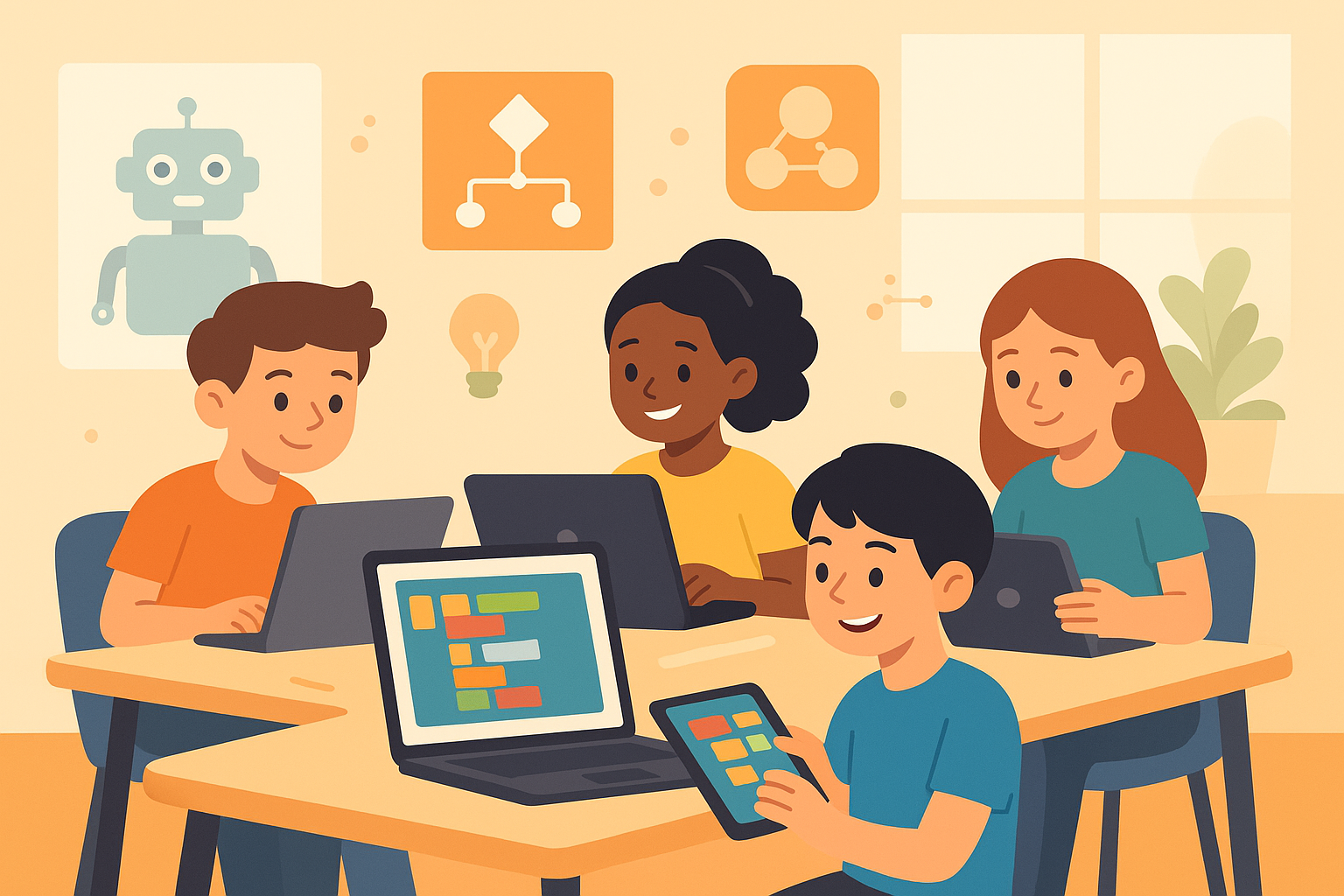If you’re curious about coding for kids, you’re in the right place. Coding helps children think clearly, solve problems, and turn ideas into games, apps, and websites they’re proud of. Done well, it feels like play—just with extra brainpower baked in.
Below you’ll find a parent-friendly guide to what kids learn, which tools and languages fit each age, and how to choose the right kids coding classes—from weekly after-school coding to school holiday coding camps.
What “coding for kids” actually means
At its core, coding for kids is about:
- Creativity: making games, stories, and interactive art
- Logic: planning steps, testing, fixing bugs
- Confidence: shipping small projects and seeing them work
- Teamwork: pair programming and coding clubs build social skills
Kids start with block-based coding (drag-and-drop) and move to text-based coding when ready.
Best languages and tools by age
Ages 5–9: Start with block-based
- Scratch and ScratchJr: perfect for games, stories, animations
- Focus: sequences, loops, events, simple debugging
- Great for beginners and coding games for kids
Ages 9–12: Bridge to text
- Scratch + intro to Python
- Build arcade-style games, simple chatbots, and puzzles
- Learn variables, conditionals, functions—all in kid-friendly projects
Ages 12–16: Real-world skills
- Python for kids: automation, data projects, text RPGs
- JavaScript for kids: interactive web pages and game mechanics
- Game development basics: sprites, collisions, scoring, levels
These paths keep things fun while building the exact thinking skills schools and employers value: problem solving, computational thinking, and resilience.
Why kids stick with it
Kids love coding when the wins come fast:
- Game-first projects: make something playable every session
- Short feedback loops: run it, see it, tweak it
- Friendly mentors: coaches who explain without jargon
- Show-and-tell: mini “demos” at the end of class build pride
If you’re comparing coding classes for kids, ask how often students ship tiny projects. Momentum matters more than long lectures.
Types of kids coding programs
After-school coding classes
Weekly sessions that build skills step by step. Ideal for consistency and deeper learning.
Coding club
A relaxed, social format where kids collaborate, share tips, and help each other. Perfect for motivation.
Holiday coding camps
Short, focused bursts—great for beginners or leveling up fast. If you’re on the Central Coast, look for school holiday coding camps Central Coast or coding crash courses near Erina.
Online coding classes for kids
Handy for busy families. Look for live coaching, small groups, and parent updates.
How to choose the right class (quick checklist)
- Age-fit curriculum: Scratch for younger kids; Python/JavaScript for teens
- Small class sizes: more hands-on help, less waiting
- Project-based learning: games, animations, and real outcomes
- Clear pathways: Scratch → Python → JavaScript → web or game dev
- Friendly reporting: short parent notes or demos so you see progress
- Local convenience: search coding near me, kids coding Central Coast, or coding classes in Erina if you’re nearby
What results should you expect?
In the first few weeks, most kids can:
- Build simple Scratch games with characters, movement, and scoring
- Understand loops, events, and “if/then” logic
- Fix small bugs on their own (huge confidence booster)
Over a term or two, they can:
- Write short Python programs and simple web pages with JavaScript
- Tackle mini-projects from idea to finished game
- Present their work—great for school and life
Many parents notice a lift in STEM confidence, problem solving, and even maths because kids practice breaking problems into steps.
Try this at home (no experience needed)
- Scratch: ask your child to make a two-player pong or a “collect the coins” game
- Python: a choose-your-own-adventure story or a number-guessing game
- JavaScript: a button that changes colors or a simple click-to-score page
Keep it light and playful. The goal is curiosity, not perfection.
Frequently asked questions
What age should my child start?
As early as 5 with block-based tools. For text-based coding, many kids are ready around 9–10.
Is coding hard for kids?
Not when it’s project-based. Start with blocks, ship tiny wins, and level up gradually.
Do we need a powerful computer?
No. Scratch runs in a browser. Python/JavaScript projects are lightweight.
Will coding help at school?
Yes. It strengthens problem solving, logic, and persistence. Many kids apply coding ideas in maths and science.
What’s the best language to start with?
Scratch for young beginners; Python for kids once they’re ready for text; JavaScript for kids when they want interactive websites and game mechanics.
If you’re on the Central Coast (Erina)
We run kids coding classes, coding club, and school holiday coding camps with age-based streams: Scratch coding for kids (5–9) and Python/JavaScript for kids (10–16). New to coding? Ask about a free trial class to see if it’s a fit.
